Photo from City of Toronto Archives, Series 1278, File 147
The Runnymede Theatre at 2225 Bloor Street West, near the southwest corner of Bloor Street West and Runnymede Road is an architectural gem in the crown of Bloor West Village. It is small wonder that the local residents fought so hard to save the building. Fortunately, the Chapters/Indigo book chain was interested in recycling the building and using it as a book store. They spent 4 million dollars to gut the interior of the auditorium and the balcony to create a space suited to their needs. In the process, they restored and maintained the interior walls and stage area, though they repainted the walls in colours that were not those of the original theatre. By saving this structure, the interior and exterior architectural features of this fine old theatre can be appreciated by future generations. The day that I visited the store, the manager graciously allowed me to photograph the interior and chatted with me about the days when his store was a theatre, proud to be associated with a book shop located inside an old theatre. Chapters/Indigo is be congratulated for recycling this great structure.
Unfortunately, it appears that the bookstore will soon close and another retail chain will occupy the premises.
Google map, 2014
The above photo of the interior of the Runnymede Theatre was taken in 2013, from where the balcony was once located, looking toward the stage area and screen below. The slanted floor of the balcony was levelled to create an area to display books.
The Runnymede Theatre was designed by Alfred Chapman, a Toronto architect well known for his work on the Royal Ontario Museum and the Palais Royale at Sunnyside. The theatre’s exterior was constructed of red brick and stone. The interior resembled an open air theatre, the ceiling painted blue to simulate the sky. Tiny light bulbs in the ceiling looked like stars. Silver and blue images of clouds were projected onto the ceiling to create a cloud-effect, as if a person were sitting in a forest under the night sky. The interior walls were in the Spanish style, with ivory stucco and gold leaf. The book store restored the walls to the way they appeared when the theatre was painted in terracotta and pastel colours.
Above the exits of the theatre were plaster ornaments. The space was lit by sconces and wall lanterns. It was the first of twenty-one “atmospheric theatre” built in Canada. The only atmospheric theatre that remains today is the Capital in Port Hope, which was inspired by the Orpheum in New York City.
The Runnymede Theatre commenced life on 2 June 1927 with several vaudeville acts, followed by screening of the film “The Fire Brigade,” the second feature being “Rookies.” The 1920s was mostly a period of prosperity in Toronto, an era when the movie-craze gripped the nation. The theatres was renovated in the 1930s and its seating capacity increased. During most of the 1970s, it ceased to operate as a theatre and was a bingo hall. It reopened in 1980 as a two-screed venue.
When the lease held by Famous Players expired, attendance at the theatres had declined. It was no longer profitable to operate the theatre. In 1999, the rent was $35,000 per month. The theatre closed on February 28, 1999. The last film shown at the Runnymede was “You’ve Got Mail.” Chapters/Indigo purchased the building and renovated it to accommodate a book store, which has since closed and the site is now occupied by a Shoppers Drug Mart.
Line-up to attend the opening of the Runnymede. This photo reveals the size of the auditorium. Photo from City of Toronto Archives.
The symmetrical north facade of the Runnymede, constructed of red bricks and stone. (Photo taken Sept 2, 2013)
Detailing on the north facade of the theatre.
Box office and entrance to the Runnymede in 2013, the buildings on the north side of Bloor Street reflected in the glass in the doors.
The lobby of the theatre today, looking out toward Bloor Street, and the medallion in the lobby ceiling.
View of the lobby in 1920s, the medallion clearly visible.
View of the orchestra seating area when the building was a movie house. In the 1920s and 1930s, the theatre was also a vaudeville venue. The photo is from The City of Toronto Archives.
View of the theatre from the stage area, looking back toward the balcony.
The stage area of the old theatre. Where the screen was located there is now a brick wall (2013).
The stage area of the old theatre. Photo from City of Toronto Archives.
The east emergency exit from the theatre. (2013)
The Spanish-style walls and the simulated sky above them in 2013.
Gazing from the balcony down onto the main floor of the theatre, where the orchestra seats were located. When this photo was taken in 2013, it contained rows of shelves for books.
Where the orchestra section of the Runnymede Theatre had been located (Photos taken in 2013)
Sources of information: web site of Heritage Toronto and the files of the City of Toronto Archives.
To view the Home Page for this blog: https://tayloronhistory.com/
To view links to other posts placed on this blog about the history of Toronto and its buildings:
https://tayloronhistory.com/2013/10/08/links-to-historic-architecture-of-torontotayloronhistory-com/
To view previous blogs about old movie houses of Toronto—historic and modern
http://tayloronhistory.wordpress.com/2013/12/18/torontos-old-movie-theatrestayloronhistory-com/
Recent publication entitled “Toronto’s Theatres and the Golden Age of the Silver Screen,” by the author of this blog. The publication explores 50 of Toronto’s old theatres and contains over 80 archival photographs of the facades, marquees and interiors of the theatres. It relates anecdotes and stories of the author and others who experienced these grand old movie houses.
To place an order for this book:
Theatres Included in the Book:
Chapter One – The Early Years—Nickelodeons and the First Theatres in Toronto
Theatorium (Red Mill) Theatre—Toronto’s First Movie Experience and First Permanent Movie Theatre, Auditorium (Avenue, PIckford), Colonial Theatre (the Bay), the Photodome, Revue Theatre, Picture Palace (Royal George), Big Nickel (National, Rio), Madison Theatre (Midtown, Capri, Eden, Bloor Cinema, Bloor Street Hot Docs), Theatre Without a Name (Pastime, Prince Edward, Fox)
Chapter Two – The Great Movie Palaces – The End of the Nickelodeons
Loew’s Yonge Street (Elgin/Winter Garden), Shea’s Hippodrome, The Allen (Tivoli), Pantages (Imperial, Imperial Six, Ed Mirvish), Loew’s Uptown
Chapter Three – Smaller Theatres in the pre-1920s and 1920s
Oakwood, Broadway, Carlton on Parliament Street, Victory on Yonge Street (Embassy, Astor, Showcase, Federal, New Yorker, Panasonic), Allan’s Danforth (Century, Titania, Music Hall), Parkdale, Alhambra (Baronet, Eve), St. Clair, Standard (Strand, Victory, Golden Harvest), Palace, Bedford (Park), Hudson (Mount Pleasant), Belsize (Crest, Regent), Runnymede
Chapter Four – Theatres During the 1930s, the Great Depression
Grant ,Hollywood, Oriole (Cinema, International Cinema), Eglinton, Casino, Radio City, Paramount, Scarboro, Paradise (Eve’s Paradise), State (Bloordale), Colony, Bellevue (Lux, Elektra, Lido), Kingsway, Pylon (Royal, Golden Princess), Metro
Chapter Five – Theatres in the 1940s – The Second World War and the Post-War Years
University, Odeon Fairlawn, Vaughan, Odeon Danforth, Glendale, Odeon Hyland, Nortown, Willow, Downtown, Odeon Carlton, Donlands, Biltmore, Odeon Humber, Town Cinema
Chapter Six – The 1950s Theatres
Savoy (Coronet), Westwood
Chapter Seven – Cineplex and Multi-screen Complexes
Cineplex Eaton Centre, Cineplex Odeon Varsity, Scotiabank Cineplex, Dundas Square Cineplex, The Bell Lightbox (TIFF)
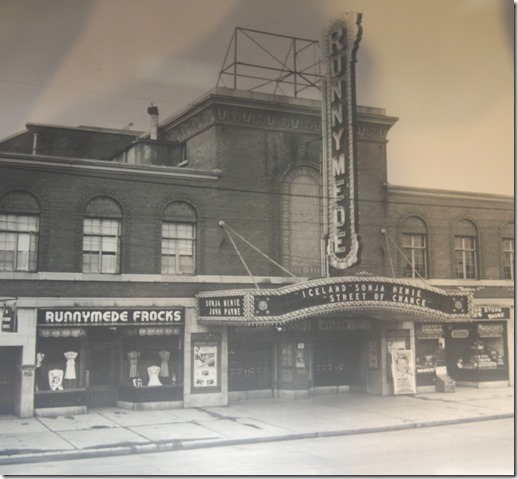
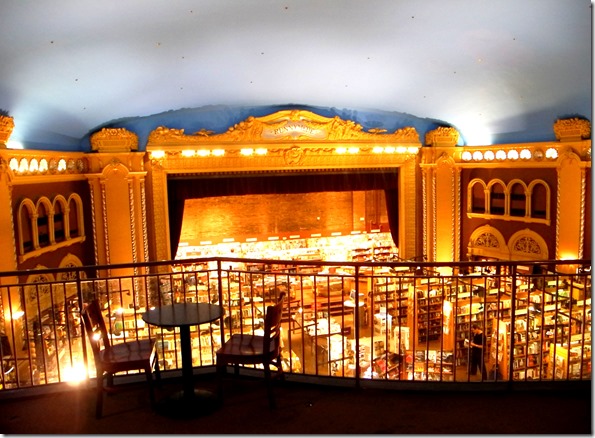
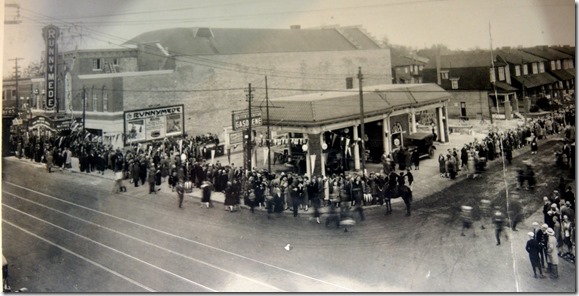
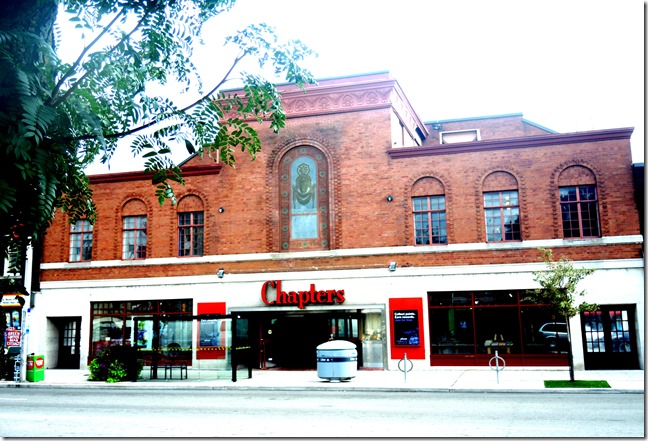
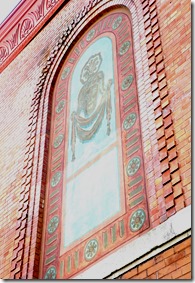
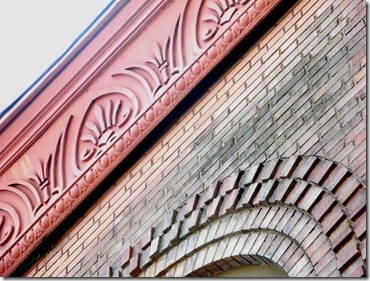
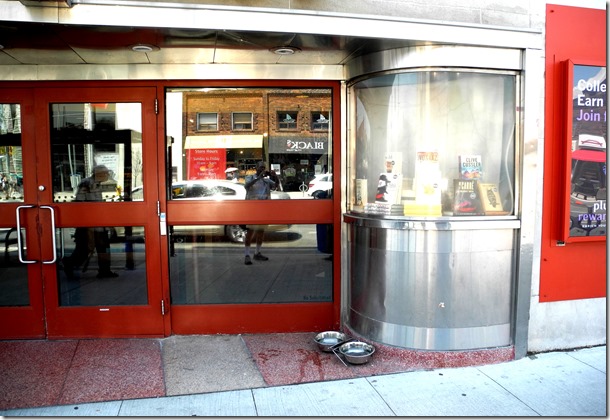
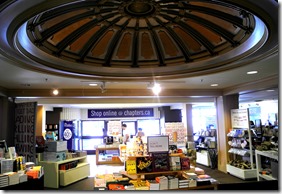
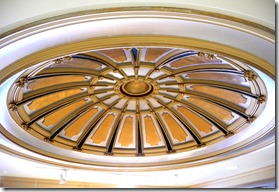
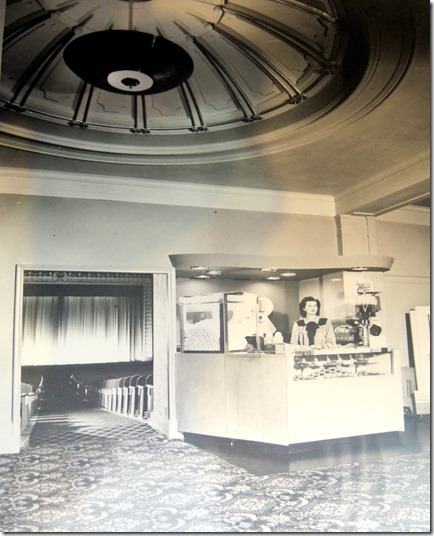
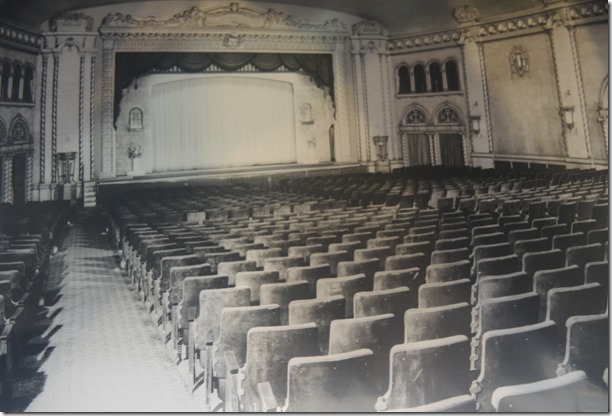
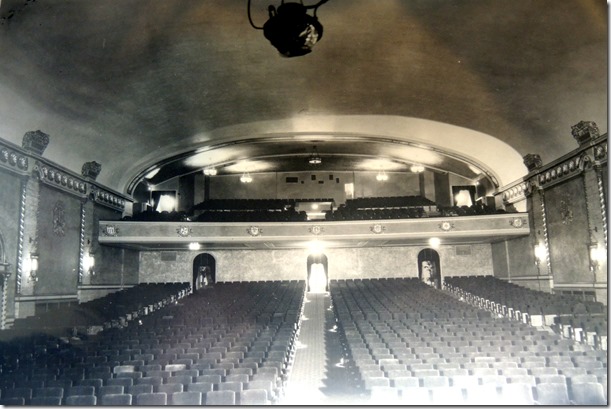
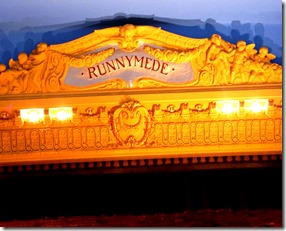
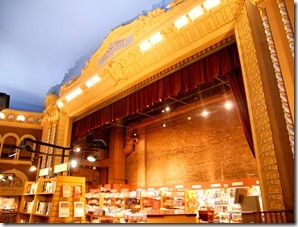
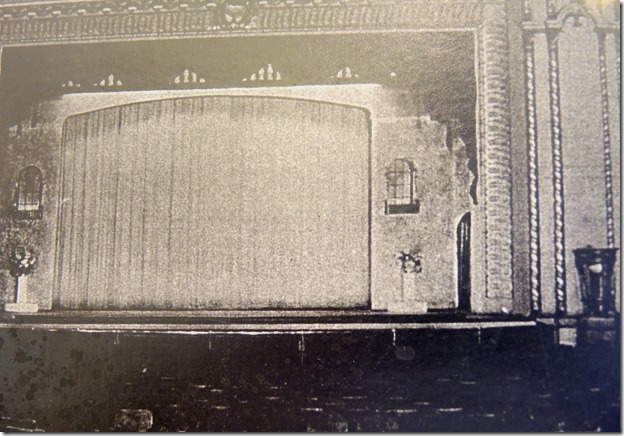
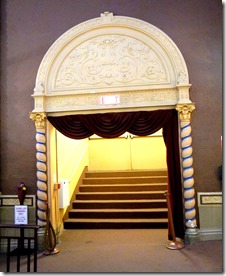
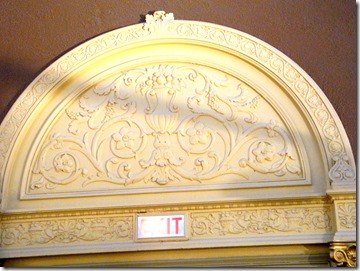
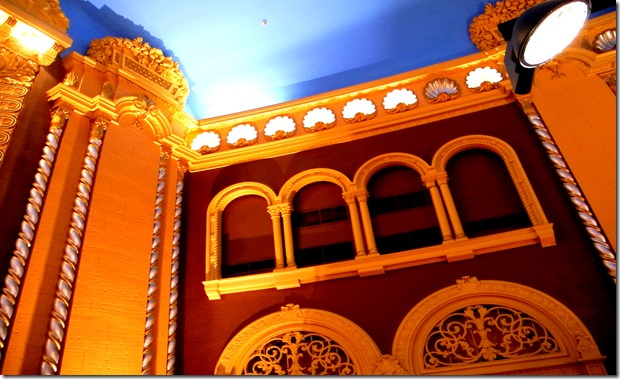
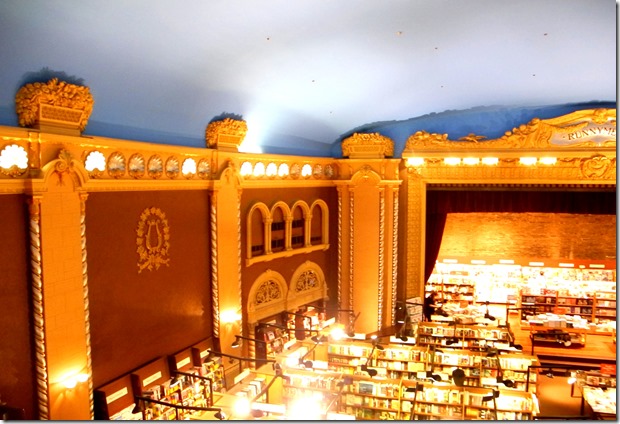
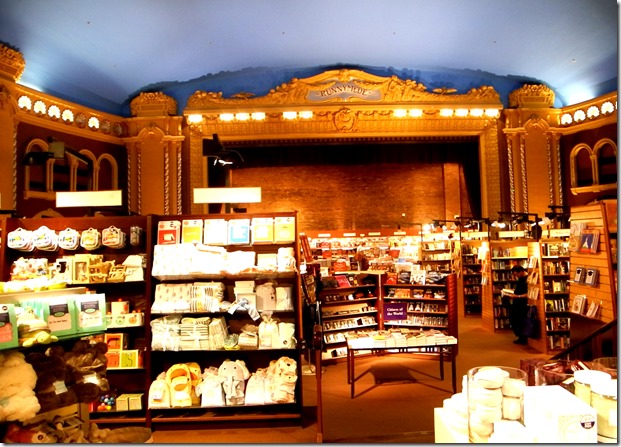
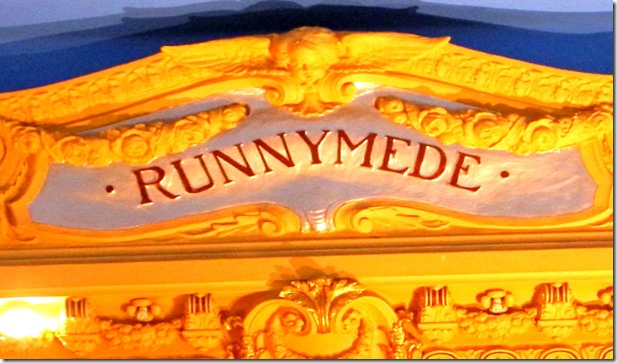
![cid_E474E4F9-11FC-42C9-AAAD-1B66D852[2] cid_E474E4F9-11FC-42C9-AAAD-1B66D852[2]](https://tayloronhistory.com/wp-content/uploads/2014/12/cid_e474e4f9-11fc-42c9-aaad-1b66d8522_thumb1.jpg)

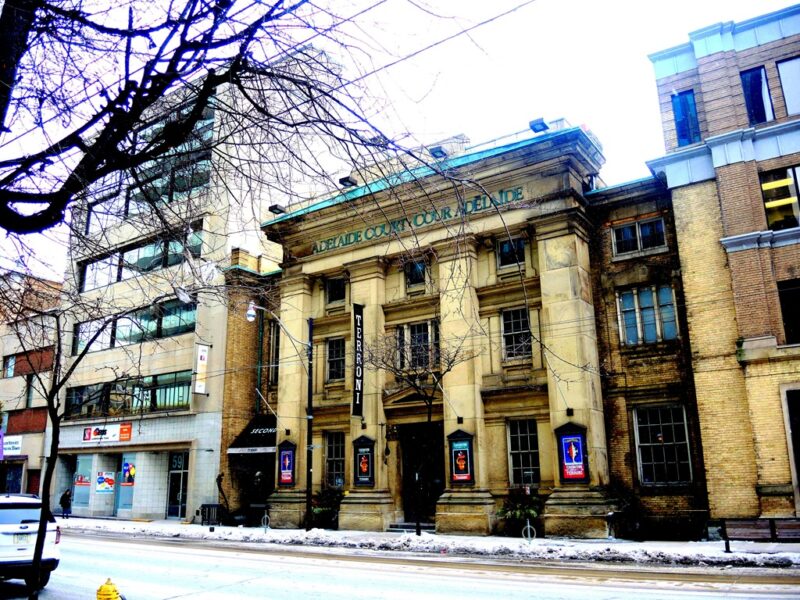
As can be seen at http://www.cinematour.com/tour/ca/1946.html the bookstore reproduced the colors used in the the theatre in the 1994 photographs. Those may not be the original colors, but they were colors used when it wa an operating theatre.